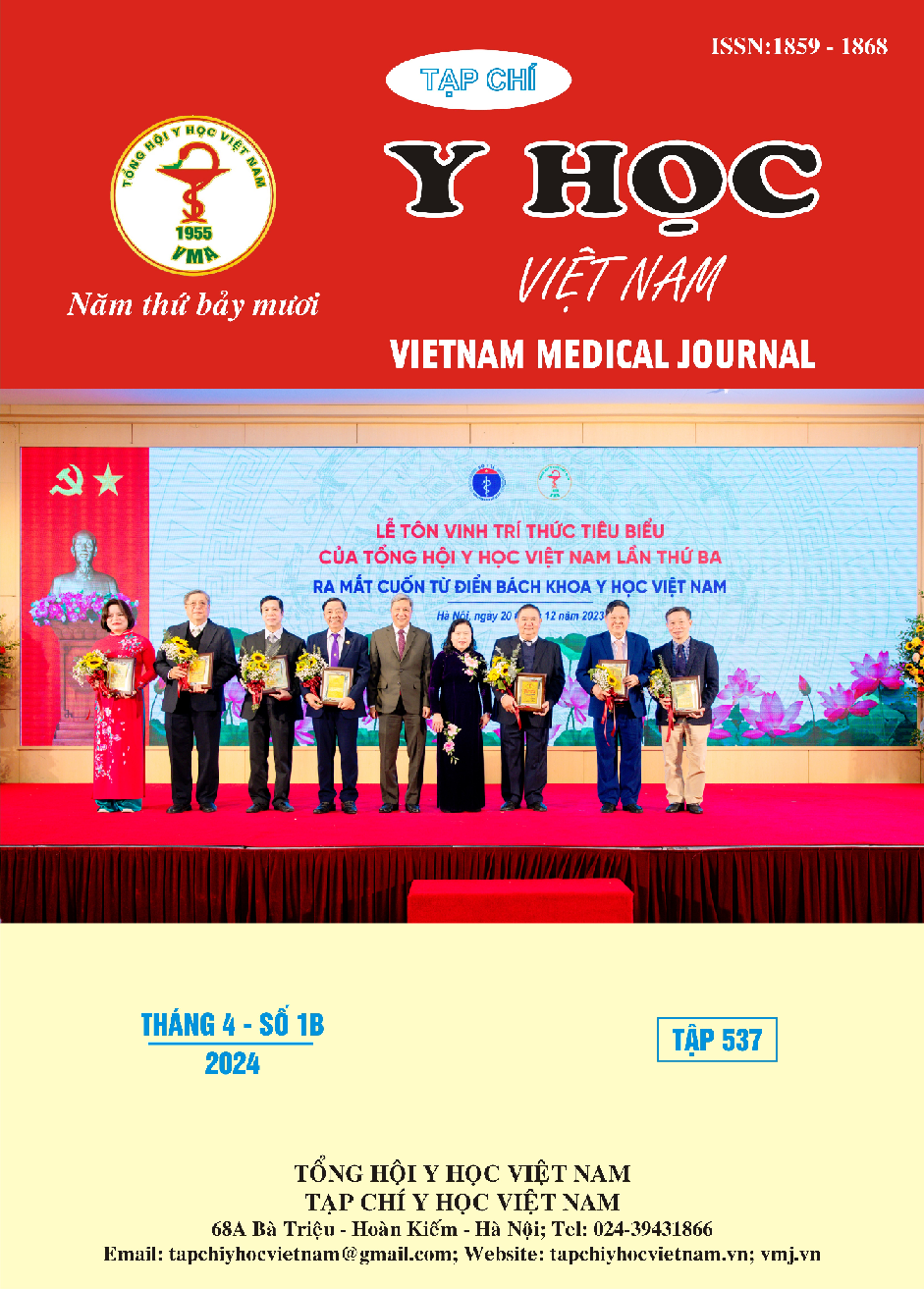MENTAL HEALTH STATUS AND SOME RELATED FACTORS OF DISTRICT HEALTH WORKER DIRECTLY PARTICIPATING IN COVID-19 PREVENTION
Main Article Content
Abstract
Objective: The study aims to describe the mental health status and some related factors of district-level medical staff directly participating in COVID-19 prevention in 7 key provinces and cities in 2021-2022. Study design: Cross-sectional study. Results: research on 249 district-level health workers shows that the proportion of district-level health workers only participating in pandemic prevention at the institutions they are working in 2022 (70.2%) was higher than in 2021 (59.0%). The average time that district health workers in 2021 come into contact with COVID-19 patients or people suspected of being infected accounts for the highest rate at about 8-12 hours/day (32.4%). By 2022, up to 32.7% of district health workers will have to expose with patients or people suspected of being infected for an average of ≥12 hours/day. During both years, the proportion of health care workers worried that the COVID 19 pandemic was not under control, worried that they might be infected with COVID-19, worried about being exposed to COVID-19 cases without knowing or feeling lonely when separated from relatives for a long time is significantly higher than worrying about lack of protective equipment or being discouraged because work results are not as expected. Although the majority of district health workers do not have problems of post-pandemic psychological trauma (PTSD), but there was a significant proportion of healthcare workers who were likely to have PTSD and need medical monitoring (23; 9.2%), with PTSD (5; 2.0%) often suffer from PTSD with severe symptoms (9; 3.6%). Worrying about lack of standard protective equipment is the only factor that increases the risk of PTSD in district-level health workers by 2.47 times (95%CI: 1.03 - 5.91), which is statistically significant
Article Details
Keywords
mental health, health-workers, COVID 19, district level
References
2. Worldmeters. COVID-19 Coronavirus pandemic. https://www.worldometers.info/coronavirus/
3. World Health Organization. COVID-19 in Viet Nam Situation Report 108. Accessed January, 10, 2024.
4. Lê Thị Thanh Xuân, Nguyễn Thanh Thảo, Phạm Thị Quân, Tạ Thị Kim Nhung, Nguyễn Thị Quỳnh, Nguyễn Huy Hoàng, Trần Thị Thùy Linh, Nguyễn Thị Vinh. Tác động của đại dịch Covid-19 tới nhân Viên Y Tế tại Hà Nội năm 2020. Tạp chí Nghiên cứu Y học. 2021;144(8):1-8. doi: https://doi.org/10.52852/tcncyh. v144i8.458.
5. Khổng Văn Cường, Đỗ Nam Khánh, Trương Hoàng Anh, Lê Minh Giang. Thực trạng nhân lực y tế tuyến xã tham gia phòng chống Covid-19 tại một số tỉnh trọng điểm trong năm 2021, 2022. Tạp chí Nghiên cứu Y học. 04/27 2023;165(4): 217-225. doi:10.52852/tcncyh.v165i4.1534
6. Trần Thanh Thúy, Đỗ Nam Khánh, Trần Thị Hảo, Trương Hoàng Anh, Lê Minh Giang. Thực trạng Tham Gia phòng chống dịch Covid-19 của nhân Viên Y Tế tuyến huyện tại một số tỉnh năm 2021 Và 2022. Tạp chí Nghiên cứu Y học. 2023;165(4): 208-216. doi:https://doi.org/10. 52852/tcncyh.v165i4.1533.
7. Li Y, Scherer N, Felix L, Kuper H. Prevalence of depression, anxiety and post-traumatic stress disorder in health care workers during the COVID-19 pandemic: A systematic review and meta-analysis. PLoS One. 2021;16(3):e0246454. doi:10. 1371/journal.pone.0246454
8. Đỗ Nam Khánh, Lê Minh Giang, Hoàng Thị Hải Vân. Thách thức về sức khỏe thể chất của nhân viên y tế tuyến xã tham gia phòng chống COVID-19 năm 2021-2022. Tạp chí Y học Việt Nam. 2023;533(1B):308-312.


